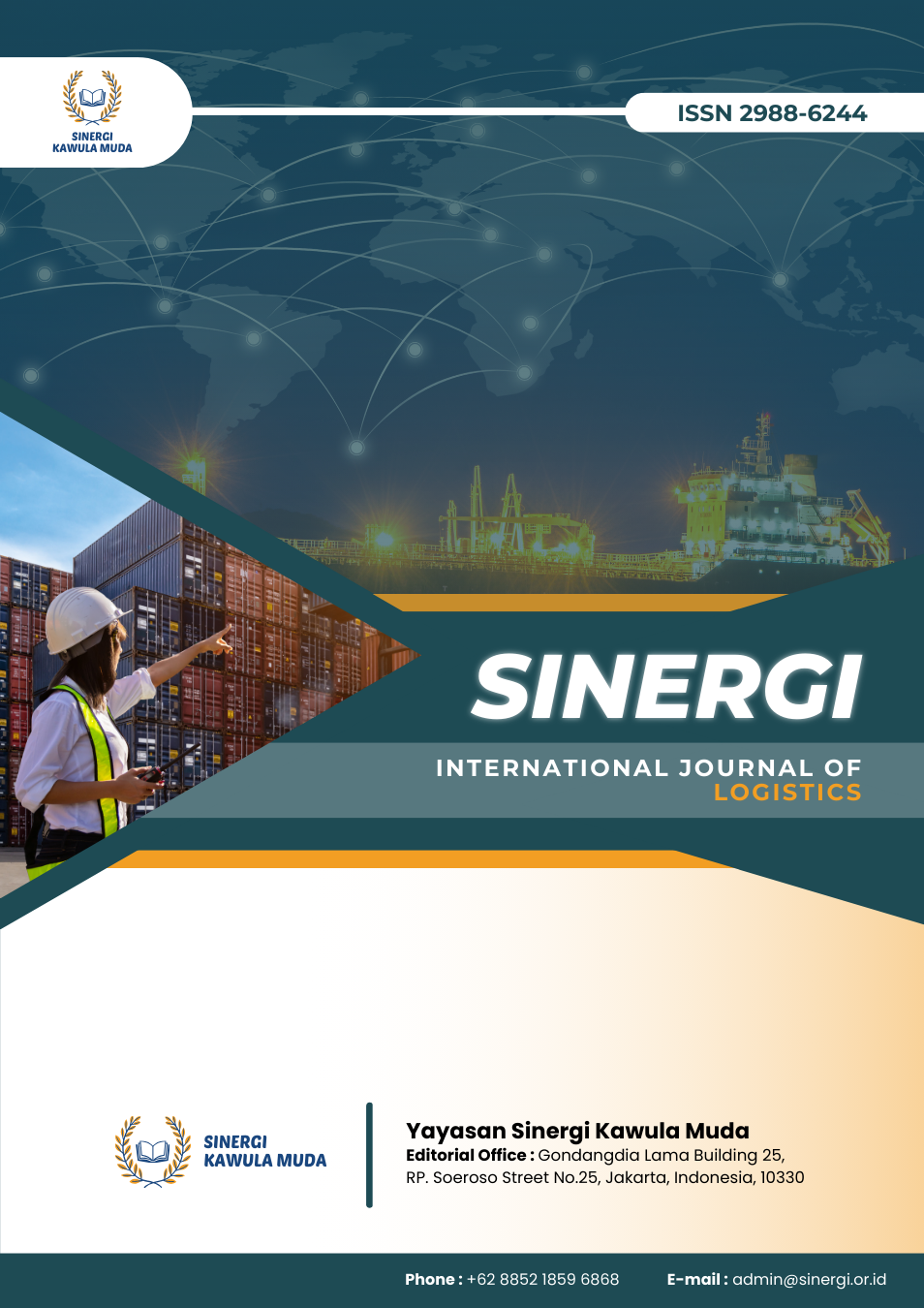Tracing Digital Collusion: A Forensic Legal Framework for Asset Recovery in Indonesian E Commerce
DOI:
https://doi.org/10.61194/sijl.v3i3.887Keywords:
Seller Collusion, Digital Forensics, Asset Tracing, E Commerce, Indonesia, Data Privacy, Forensic AnalyticsAbstract
Seller collusion on e-commerce platforms threatens fair competition, financial integrity, and consumer trust. This study examines Indonesia’s capacity to trace and recover assets derived from digital collusion by analyzing its legal, forensic, and institutional readiness. Using a doctrinal legal approach combined with digital forensic protocols under ISO/IEC 27037, the study integrates three empirical datasets: seller account metadata, financial transaction flows (virtual accounts, e-wallets, and bank accounts), and enforcement records (asset seizures, freeze orders, and beneficial ownership disclosures). International case comparisons with the United Kingdom and the United States provide contextual benchmarks. Findings reveal that Indonesia’s current legal instruments—including the Anti-Money Laundering Law (Law No. 8/2010), KUHAP Articles 39 and 46, and Presidential Regulation No. 13/2018 on Beneficial Ownership—are conceptually strong but remain underutilized in practice. Operational barriers such as institutional silos, lack of real-time data access, and limited forensic expertise hinder effective asset recovery. Nonetheless, forensic analytics evidence—like synchronized pricing, mutual refund loops, and shared account linkages—demonstrates feasible detection pathways. The integration of AI-based tools and graph analytics is highlighted as a promising solution. The discussion stresses the need for regulatory synchronization, risk-based privacy access, and adherence to global standards like POCA and BSA. Compliance with the Personal Data Protection Law (Law No. 27/2022) through encryption and pseudonymization is also crucial. The study concludes that strengthening legal frameworks, enhancing forensic capabilities, and implementing ethical data governance are essential for Indonesia to advance its digital asset tracing and recovery efforts.
References
Arifin, R., Sigit, R., & Putra, A. K. (2023). Collaborative Efforts in ASEAN for Global Asset Recovery Frameworks to Combat Corruption in the Digital Era. Jurnal Ilmiah Hukum Legality, 31(2), 329–343. https://doi.org/10.22219/ljih.v31i2.29381 DOI: https://doi.org/10.22219/ljih.v31i2.29381
Calvano, E., Calzolari, G., Denicolò, V., & Pastorello, S. (2019). Algorithmic Pricing What Implications for Competition Policy? Review of Industrial Organization, 55(1), 155–171. https://doi.org/10.1007/s11151-019-09689-3 DOI: https://doi.org/10.1007/s11151-019-09689-3
Esther, J. (2020). A Demands of Combated Demands Criminal Crime of Corruption Criminal Accounts Money Laundering. https://doi.org/10.4108/eai.20-9-2019.2296615 DOI: https://doi.org/10.4108/eai.20-9-2019.2296615
Haq, M. A., Bakir, H., & Redi, A. (2023). The Efforts to Prevent Money Laundering in Indonesia. Jurnal Indonesia Sosial Sains, 4(06), 516–522. https://doi.org/10.59141/jiss.v4i06.816 DOI: https://doi.org/10.59141/jiss.v4i06.816
Hariyadi, D., Kusuma, M., Sholeh, A., & Fazlurrahman. (2021). Digital Forensics Investigation on Xiaomi Smart Router Using SNI ISO/IEC 27037:2014 and NIST SP 800-86 Framework. https://doi.org/10.2991/aer.k.211222.023 DOI: https://doi.org/10.2991/aer.k.211222.023
Haryono, T. (2024). The Important Role of the Indonesian National Police in Maintaining Security Stability and Its Impact on Indonesia’s Economic Growth. Ijist, 2(5), 384–395. https://doi.org/10.59890/ijist.v2i5.1905 DOI: https://doi.org/10.59890/ijist.v2i5.1905
Kopp, T., & Sexton, R. J. (2020). Farmers, Traders, and Processors: Buyer Market Power and Double Marginalization in Indonesia. American Journal of Agricultural Economics, 103(2), 543–568. https://doi.org/10.1111/ajae.12149 DOI: https://doi.org/10.1111/ajae.12149
Mohas, M., Jaya, B. P. M., Fasyehhudin, M., & Jaya, A. M. (2022). The Indonesia Government’s Strategy in Arrest and Confiscation of Criminal Corruption (Corruptor) Assets Abroad. Jurnal Dinamika Hukum, 21(3), 432. https://doi.org/10.20884/1.jdh.2021.21.3.2882 DOI: https://doi.org/10.20884/1.jdh.2021.21.3.2882
Pavlidis, G. (2021). Asset Recovery in the European Union: Implementing a “No Safe Haven” Strategy for Illicit Proceeds. Journal of Money Laundering Control, 25(1), 109–117. https://doi.org/10.1108/jmlc-11-2020-0131 DOI: https://doi.org/10.1108/JMLC-11-2020-0131
Redi, A., & Kristianto, D. (2023). The Crime of Money Laundering in the Perspective of Criminal Law. International Journal of Engineering Business and Social Science, 2(2), 933–937. https://doi.org/10.58451/ijebss.v2i2.116 DOI: https://doi.org/10.58451/ijebss.v2i2.116
Sara, R., & Kristianto, D. (2023). Implementation of Reporting Obligations for Financial Service Providers in Preventing Money Laundering Crimes at PPATK Institutions. https://doi.org/10.4108/eai.28-10-2023.2341778 DOI: https://doi.org/10.4108/eai.28-10-2023.2341778
Sari, H. B., Ningsih, N. M. A. P. C., Kristina, N. M. Y., Rismayanti, N. P. I., Thalib, E. F., Meinarni, N. P. S., & Julianti, L. (2024). Digital Ethics and Citizenship Challenges in Cyberspace: An Overview From Perspective Morals and Laws. Notariil Jurnal Kenotariatan, 9(1), 33–39. https://doi.org/10.22225/jn.9.1.2024.33-39 DOI: https://doi.org/10.22225/jn.9.1.2024.33-39
Schwalbe, U. (2018). Algorithms, Machine Learning, and Collusion. Journal of Competition Law & Economics, 14(4), 568–607. https://doi.org/10.1093/joclec/nhz004 DOI: https://doi.org/10.1093/joclec/nhz004
Selmi, W., Hammami, A., Hammami, R., Ceylan, H. İ., Morgans, R., & Šimenko, J. (2024). Effects of a 6-Week Agility Training Program on Emotional Intelligence and Attention Levels in Adolescent Tennis Players. Applied Sciences, 14(3), 1070. https://doi.org/10.3390/app14031070 DOI: https://doi.org/10.3390/app14031070
Shiva, K. A., Putry, S. A. S., & Hosnah, A. U. (2024). Kebijakan Penegakan Hukum Tindak Pidana Terhadap Pencucian Uang (Money Laundering) Di Indonesia. Tatohi Jurnal Ilmu Hukum, 4(10), 803. https://doi.org/10.47268/tatohi.v4i10.2581 DOI: https://doi.org/10.47268/tatohi.v4i10.2581
Sukarmi, S., Tejomurti, K., & Silalahi, U. (2024). Digital Market and Its Adequacy of Merger Assessment in Indonesian Business Competition Law. International Journal of Law and Management, 66(6), 694–719. https://doi.org/10.1108/ijlma-08-2023-0185 DOI: https://doi.org/10.1108/IJLMA-08-2023-0185
Syarafi, T., & Syahbandir, M. (2024). Confiscation of Corruption Asset in the Indonesian Legal System: A Study of Criminal Law in Aceh. Samarah Jurnal Hukum Keluarga Dan Hukum Islam, 8(2), 665. https://doi.org/10.22373/sjhk.v8i2.20045 DOI: https://doi.org/10.22373/sjhk.v8i2.20045
Vedamanikam, M., Chethiyar, S. D. M., & Norruzeyati bt Che Mohd Nasir. (2020). Model for Money Mule Recruitment in Malaysia: Awareness Perspective. People International Journal of Social Sciences, 6(2), 379–392. https://doi.org/10.20319/pijss.2020.62.379392 DOI: https://doi.org/10.20319/pijss.2020.62.379392
Wibisana, A. W., & Hasbullah, H. (2024). Key Factors to Increase the Role of the Prosecutor’s Stolen Asset Recovery Agency in Indonesia: Opportunities and Challenges. Beijing Law Review, 15(01), 319–353. https://doi.org/10.4236/blr.2024.151021 DOI: https://doi.org/10.4236/blr.2024.151021
Wicaksono, M. R., Raditya, K., Andrini, L., & Hawin, M. (2019). Implementing the Extraterritoriality Principle to Strengthen Competition Law Enforcement in Indonesia in the Aec Era: A Comparative Study. Indonesia Law Review, 9(1). https://doi.org/10.15742/ilrev.v1n9.498 DOI: https://doi.org/10.15742/ilrev.v1n9.498
Yusdanial, R. F. D. (2024). Legal Uncertainty Regarding the Synergy of Tax Authorities and Corruption Court Authorities in Imposing Tax on Assets Proceedings of Corruption That Have Not Been Reported by Corrupt Perpetrators in Annual Tax Returns. Syntax Idea, 6(11), 6716–6729. https://doi.org/10.46799/syntax-idea.v6i11.11178 DOI: https://doi.org/10.46799/syntax-idea.v6i11.11178
Downloads
Published
How to Cite
Issue
Section
License
Copyright (c) 2025 Tutik Siswanti

This work is licensed under a Creative Commons Attribution 4.0 International License.





